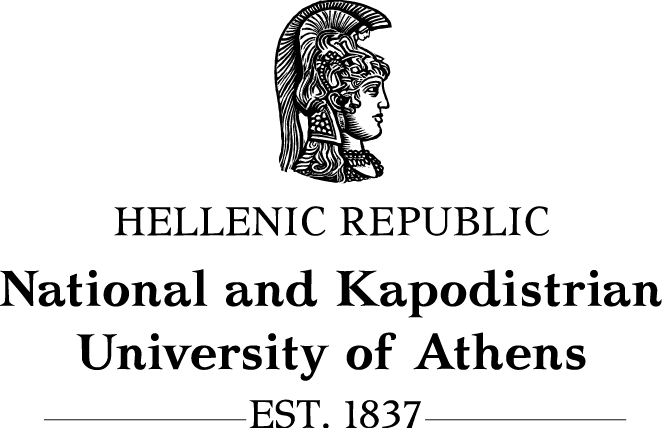FINANCIAL ECONOMICS
Elective Course - 3nd Semester (Autumn 2nd year) | Course ID: 402 | E-Class
According to the curriculum, students must choose two elective courses during the third semester
Lecturer
Demophanes Papadatos
Language of instruction
English
Course contents
- General introduction to financial systems and the financial institutions that govern their operation; what a financial system consists of; who uses it and what are its purposes; characteristics of financial institutions; characteristics of financial markets; importance for the smooth functioning of the economy.
- Different forms of financial systems and operational differences between them (Bank-based versus Market-based financial systems)
- Concept of Efficient Markets (Efficient Market Hypothesis); Description of the forces that tend to shape efficient markets; Distinction between different forms of efficient markets; Implications of the Efficient Markets Hypothesis; Empirical confirmation of the Efficient Markets Hypothesis
- Capital Asset Pricing Model (CAPM). Why investors tend to avoid risk (risk aversion). Why portfolio diversification tends to reduce risk. Calculating portfolio risk and return. How and by what criteria investors choose a particular portfolio over others. How markets price risk. How the risk of an asset is priced. How the required return on an asset is calculated.
- Determination of short-term interest rates. The difference between nominal and real interest rates. The determination of short-term interest rates based on loanable funds and liquidity preference theories and the different assumptions behind these theories. The Fisher effect. The central bank and the limits of monetary policy.
- The term structure of interest rates. The concept of risk and the term premium. Why the period to maturity of an asset affects its return. Why the term premium is required. Why there is term-premium even when an asset can be liquidated on the spot. Forms of risk for lenders and borrowers. Why risk affects the return on an asset. How expected changes in interest rates can affect the yield curve.
- Markets. Money, Bonds, Derivatives. The main financial instruments that characterize the functioning of individual financial markets. Creation of individual markets, their characteristics, how they operate and how they are priced.
Bibliography
- Tobin J 1987 ‘Financial Intermediaries’ In: Eatwell J et al. (eds) The New Palgrave, Macmillan
- Allen F 1990 ‘The Market for Information and the Origin of Financial Intermediation’ Journal of Financial Intermediation 1 pp.3-30.
- Bernanke B and Gertler M 1987 ‘Banking in General Equilibrium’, in Barnett W & Singleton K (eds) New approaches to Monetary Economics, Cambridge UP.
- Williams JG 1984 ‘Fractional Reserve Banking in Grain’, Journal of Money Credit and Banking 16(4), pp.488-496.
- Goodfriend M 1991 ‘Interest Rates and the Conduct of Monetary Policy’ Carnegie Rochester Series on Public Policy 34.
- Fama EF 1971 ‘Risk, Return and Equilibrium’ Journal of Political Economy 79(1) pp. 30–55.
- Fama EF & MacBeth J 1973 ‘Risks, Returns and Equilibrium: Empirical Tests’ Journal of Political Economy 81(3), pp. 607–636
- Sharpe WF 1964 ‘Capital Asset Prices: A Theory of Market Equilibrium under Conditions of Risk’ Journal of Finance 19(3), pp. 425–442
- Malkiel, B.G., 1966 The Term Structure of Interest Rates: Theory Evidence and Applications McCaleb-Seiler
- Shiller RJ 1990 ‘The Term Structure of Interest rates’ In: B.M. Friedman and F.H. Hahn (eds) Handbook of Monetary Economics, vol.1, North Holland.
- Shiller RJ 1979 ‘The Volatility of Long-term Interest Rates and Expectations Models of the Term Structure’ Journal of Political Economy 87(6) pp.1190-1219.
- Modigliani F & Miller MH 1958 ‘The Cost of Capital, Corporation Finance and the Theory of Investment’ American Economic Review 48(3) pp.261-297.
- Fama EF 1970 ‘Efficient Capital Markets’ Journal of Finance 25(2) pp.383-417.
- Fama EF 1991 ‘Efficient Capital Markets II’ Journal of Finance 46(5) pp.1575-1617.
Assessment
The course is assessed by a written examination in English at the end of the semester. Students are assessed on their understanding of key concepts, critical thinking and analysis, and their ability to search, analyse and synthesise data and information. Assessment criteria are communicated to students through the course outline.
